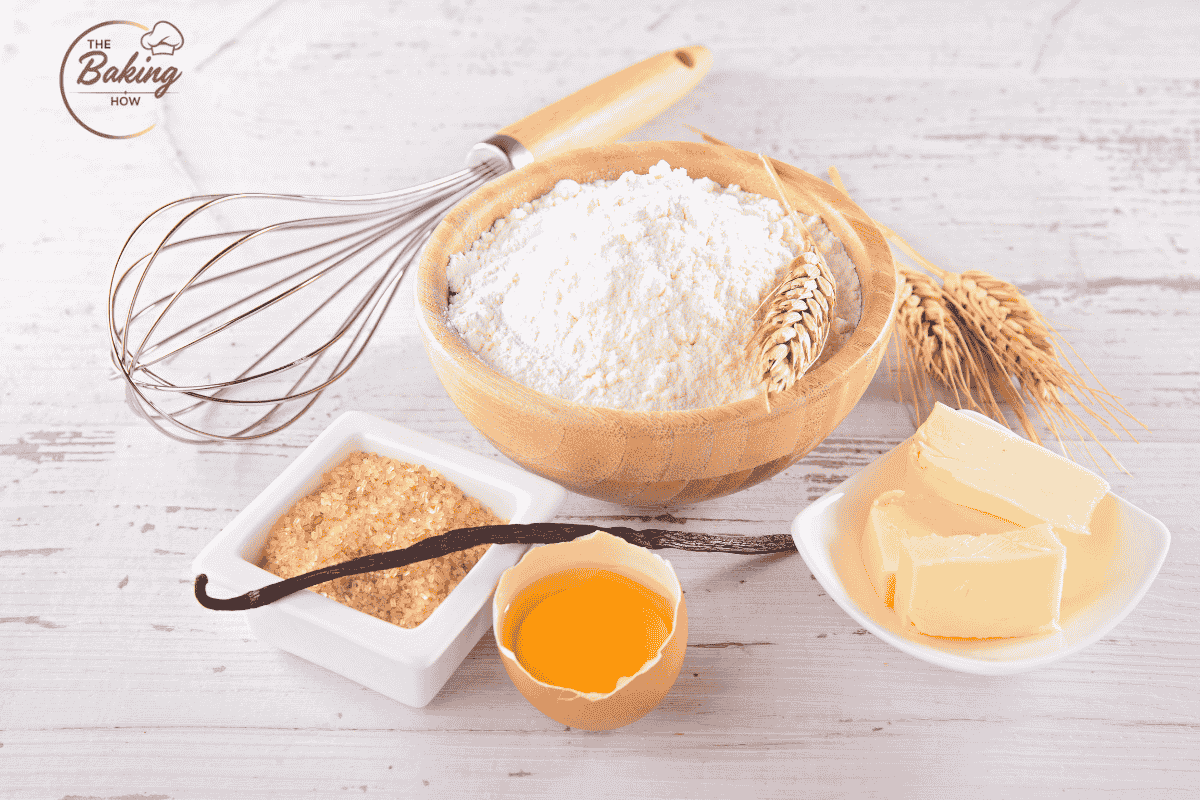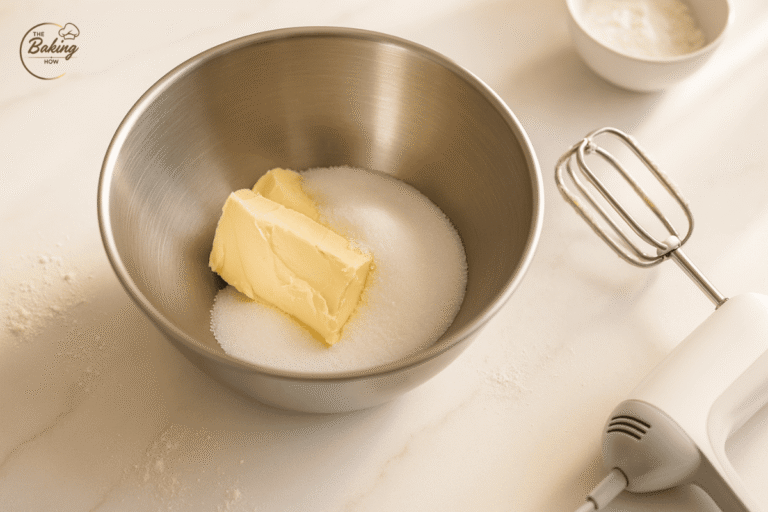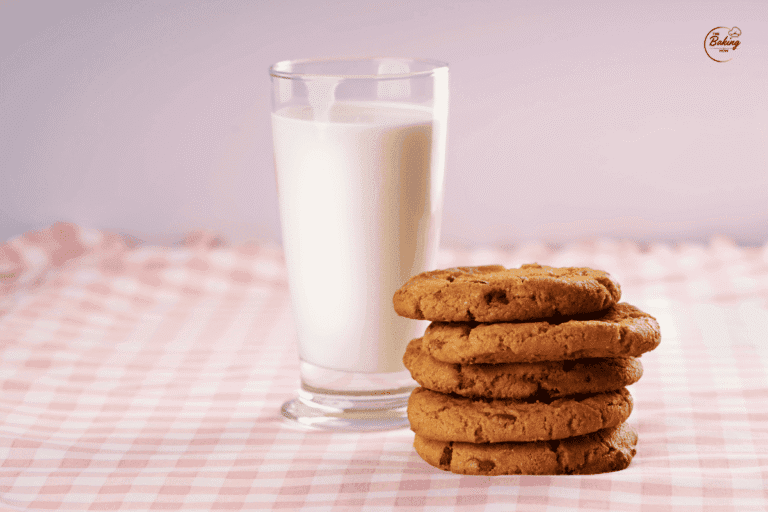How Ingredients Affect Cookie Texture (The Complete Baking Science Guide)
Ever wondered why one batch of cookies turns out perfectly chewy while another becomes hard, crumbly, or spreads into a puddle?
You are not alone — and the answer lies in the science of ingredients.
Every component in a cookie—flour, sugar, fat, eggs, and leavening agents—plays a distinct role that shapes texture, color, flavor, and even spread. Understanding how each ingredient interacts gives you the power to bake exactly the cookies you want, every single time.
🧠 Quick Takeaway:
- Flour builds structure and chew.
- Sugar defines sweetness and crispness.
- Fats control softness and spread.
- Eggs bind, add moisture, and lift.
- Leaveners determine rise and crumb.
When I first began baking 17 years ago, I was puzzled by why some batches came out tough while others were soft and delicate. Years working in the cookie industry taught me that even a small tweak—switching flour type, adjusting butter temperature, or balancing brown and white sugar—can completely transform texture.In this complete guide, we’ll break down what each ingredient really does, the science behind it, and how to tweak ratios for your preferred texture.
By the end, you’ll not only know what goes into a cookie but also why it matters—so you can troubleshoot, experiment, and bake with total confidence.
🌾 Flour’s Role in Cookie Texture
Flour is the backbone of every cookie recipe—it creates the structure and has a direct impact on cookie texture. The type of flour you choose, and how you mix it, can make the difference between soft, chewy cookies or hard, crunchy ones.
- High-gluten flour: Absorbs more water and develops stronger gluten networks, leading to a tougher dough and harder cookies.
- Low-gluten flour: Produces softer, more tender cookies with a crumbly bite.
- Mixing technique: Overmixing flour activates too much gluten, making cookies hard and crunchy, while undermixing leaves the dough weak and crumbly.
| Flour Type | Protein (Gluten) % | Effect on Cookie Texture |
|---|---|---|
| High-Gluten / Bread Flour | 11–13% | Tougher, denser dough — results in harder cookies and less spread. |
| All-Purpose Flour | 9–10% | Balanced structure and chew — ideal for most cookie recipes. |
| Low-Gluten / Cake Flour | 7–8% | Soft, tender, and crumbly texture — creates melt-in-your-mouth cookies. |
If you want to dive deeper into which flour performs best for cookies (including cake vs. pastry vs. all-purpose), explore this full guide →
👉 Best Flour for Cookies
🏭 Industry Insight
In the cookie industry, we carefully test every flour lot for gluten percentage, moisture level, and water absorption capacity before production.
These values ensure consistent dough handling and uniform bake results:
- Gluten: 8.5–9%
- Moisture: <15%
- Water absorption: 55–60%
By maintaining these standards, we can guarantee even spread, color, and texture across every cookie batch.
“If you’ve ever had cookies turn out too soft, it could also be related to flour measurement — check out Why Are My Cookies Too Soft? for fixes.”
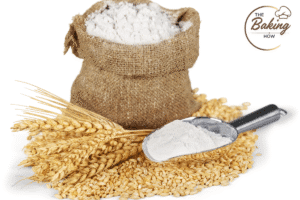
🍬 Sugar and Sweeteners – Crispy vs. Chewy Cookies
Sugar is not just about sweetness — it directly impacts cookie texture, spread, color, and even moisture retention. When cookies bake, sugar melts and undergoes caramelization and Maillard reaction, creating that golden-brown color and delicious flavor.
- Granulated (white) sugar: Creates crispier and crunchier cookies. Large crystals don’t fully dissolve, which gives a crunch. Too much granulated sugar makes cookies spread too much and lose shape.
- Brown sugar: Contains molasses, which adds moisture and results in soft, chewy cookies. That’s why chocolate chip cookies often use a mix of white and brown sugar.
- Powdered (confectioners’) sugar: Produces a tender, shortbread-like texture because it dissolves quickly.
- Liquid sweeteners (honey, maple syrup, corn syrup): Increase moisture and create a chewier, denser texture, but they also affect spreading.
| Sugar Type | Key Property | Effect on Texture |
|---|---|---|
| Granulated (White) Sugar | Large crystals, low moisture | Makes cookies crispier and promotes more spread. |
| Brown Sugar | Contains molasses, high moisture | Adds chewiness, softness, and richer flavor. |
| Powdered (Confectioners’) Sugar | Finely ground, dissolves quickly | Creates tender, shortbread-like cookies with minimal spread. |
| Liquid Sweeteners (Honey, Syrup) | High moisture and fructose | Produces dense, chewy texture but reduces crispness. |
The type of sugar you choose is one of the biggest factors in determining whether your cookie is chewy or crisp. The difference is so important that I have written a detailed comparison of brown sugar vs. white sugar in cookies.
👩🍳 Pro Tip for Home Bakers:
If you want crispy cookies, increase white sugar. For chewy cookies, increase brown sugar. For melt-in-your-mouth shortbread, use powdered sugar.
🏭 Industry Insight:
In commercial baking, we prefer milled sugar because it has more volume than regular granulated sugar, helping us achieve consistent sweetness and controlled spread. By sticking to standard sugar ratios, we always get uniform, soft-textured cookies with perfect shape.
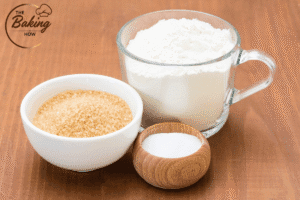
🥛 Butter, Oil, and Fats – Spread, Crisp, or Softness
Fats and oils are one of the most critical ingredients in cookies, directly influencing spread, crispiness, softness, and overall mouthfeel. When sugar and butter (or another fat) are creamed together, the sugar crystals get coated with fat.
During baking, these crystals melt, creating small air pockets that give cookies their structure and characteristic open pores.
- Excess fat or butter – causes cookies to spread too much, lose their shape, and turn out soft and crumbly.
- Too little fat or butter – results in cookies that don’t spread properly, making them hard, dense, and sometimes underbaked in texture.
🏭 Industry Insight
In large-scale cookie production, fats are chosen not just for flavor but for texture control, cost, and handling performance.
- Shortening helps maintain consistent texture during transport and storage.
- Butter blends are often used when flavor and spread are priorities.
- Emulsifiers and antioxidants are added to industrial fat mixes to extend freshness and prevent rancidity.
Understanding these functional differences is key to scaling recipes while preserving the desired bite and texture.
Butter is not just a source of fat—it’s a flavor and texture enhancer. To understand exactly how butter affects spread, crispness, and flavor, explore our full guide:
👉 What Does Butter Do in Cookies?
| Fat Type | Key Property | Effect on Cookie Texture |
|---|---|---|
| Butter | Rich flavor, low melting point | Encourages spread, crisp edges, and buttery flavor. |
| Shortening | Solid at room temp, no water content | Creates taller, softer cookies with minimal spread and longer shelf life. |
| Oil | Liquid fat, high moisture retention | Makes cookies moist and tender but may reduce structure and lift. |
👉 Pro Tip for Home Bakers: While most home bakers prefer butter for flavor, you can also make a simple version of shortening at home. Just heat oil and pour it over ice – the rapid cooling will solidify it into a shortening-like fat that can be used in cookie recipes.
“Using the wrong type of fat can even cause uneven baking or browning — similar to what we explained in Why Do Cookies Burn on the Bottom?.”
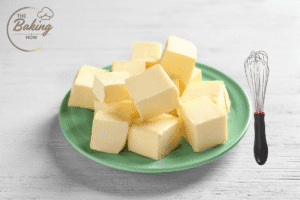
🥚 Eggs and Their Impact on Cookie Texture
After the foundational ingredients like flour, sugar, and butter, eggs also play a key role in shaping cookie texture. Eggs act as a natural emulsifier, helping fats (butter or oil) blend smoothly with other liquid ingredients such as milk or water.
When eggs are added to cookie dough:
- They incorporate air during mixing, making the dough lighter and fluffier.
- They contribute to moisture and softness, preventing cookies from becoming dry.
- They give cookies a slightly shiny finish and add a subtle “eggy” flavor.
🏭 Industry Insight
In commercial cookie production, egg usage is precisely calculated based on dough rheology and moisture targets.
A single percentage change in egg solids can alter spread, color, and even shelf life.
To optimize costs while maintaining texture:
- Egg powders or emulsifiers (like soy lecithin) are often substituted.
- Liquid pasteurized eggs ensure safety and consistent quality.
- Glazing systems (egg + sugar syrup) enhance surface color and sheen.
These controlled methods give industrial cookies a uniform appearance and extended freshness—something home bakers can replicate on a smaller scale using egg-milk glazes.
| Egg Component | Primary Function | Effect on Texture |
|---|---|---|
| Whole Egg | Emulsifier & Moisture Retention | Gives balanced structure and softness; enhances chewiness. |
| Egg Yolk | Fat & Richness | Creates tender, dense, and flavorful cookies. |
| Egg White | Protein & Aeration | Adds lightness, lift, and a slightly crisp exterior. |
👉 Pro Tip (Baking at Home): For glossy cookies, brush or spray a light glaze made from egg and milk powder on top before baking. This creates a beautiful golden-brown, shiny finish that looks bakery-quality.
“If your dough turns sticky while adjusting eggs, see our guide Why Is My Cookie Dough Too Sticky or Wet?.”
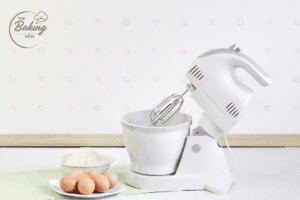
🥄 Baking Powder vs. Baking Soda – Rise and Texture
Leavening agents are another key factor in how cookies rise, spread, and develop their final texture. When heat is applied during baking, baking soda and baking powder release carbon dioxide gas. This gas creates small air pockets in the dough, causing the cookies to rise and expand while giving them a lighter texture.
The right balance is important:
- Too much leavening can make cookies spread excessively and collapse after baking.
- Too little leavening results in dense, flat cookies with little rise.
🏭 Industry Insight
In commercial cookie production, leavening systems are precisely calibrated to control spread, color, and internal texture.
Professional bakers often adjust:
- Gas release rate (by blending multiple leaveners)
- pH balance (to optimize browning reactions)
- Moisture activity (to synchronize rise with structure set)
Ammonium bicarbonate remains a preferred industrial choice for thin, crisp cookies such as crackers or butter biscuits, while double-acting baking powders dominate soft-cookie formulations.
| Leavening Agent | Key Property | Effect on Cookies |
|---|---|---|
| Baking Soda (Sodium Bicarbonate) | Requires acid to activate | Promotes spread, browning, and a chewy texture. |
| Baking Powder | Contains both acid and base | Produces puffier, lighter cookies with more rise. |
| Ammonium Bicarbonate | Fast-acting gas release under heat | Creates crisp, dry cookies with a porous structure (industrial use only). |
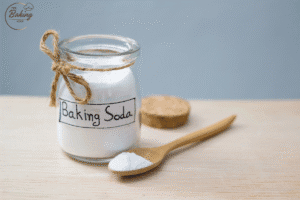
🍯 Syrups and Liquid Sweeteners – Chewiness and Shine
Syrups aren’t just about sweetness — they also transform texture, color, and moisture retention in cookies.
Unlike dry sugars, liquid sweeteners like honey, maple syrup, corn syrup, and molasses add water and invert sugars to the dough. This keeps cookies chewy, soft, and glossy, even days after baking.
A small amount of syrup can also enhance color, giving cookies that irresistible golden-brown sheen and rich flavor depth.
When balanced correctly, syrups create that “soft in the center, crisp at the edge” cookie texture that every baker loves.
📊 Common Syrups and Their Effects on Cookie Texture
| Syrup Type | Key Property | Effect on Cookie Texture |
|---|---|---|
| Honey | Natural invert sugar, high moisture | Makes cookies soft, chewy, and flavorful with golden color. |
| Corn Syrup | Moisture retention, smooth texture | Gives cookies glossy tops and helps prevent crystallization. |
| Maple Syrup | Fructose + minerals, medium sweetness | Adds mild chewiness with a caramelized flavor note. |
| Molasses | High viscosity, strong flavor | Creates dense, dark, and rich cookies like gingerbread or molasses cookies. |
🏭 Industry Insight
In commercial cookie production, syrups are used strategically to control texture, browning, and shelf life.
- Glucose syrup improves chewiness and keeps cookies soft over time.
- Invert sugar prevents crystallization and gives a smooth bite.
- Molasses is used in darker cookies for color intensity and flavor complexity.
By adjusting syrup ratios, bakeries can fine-tune the spread, softness, and color stability of each cookie batch — a technique you can replicate at home in small batches for perfect results.
🍫 Add-Ins: Chocolate, Nuts, and Extras
Beyond the core ingredients, add-ins can completely change a cookie’s texture.
- Chocolate chips or chunks melt slightly during baking, creating pockets of soft, gooey texture alongside a light crunch when they firm up again.
- Nuts like peanuts, almonds, or walnuts bring a firm, crunchy bite that contrasts beautifully with a soft cookie base.
- Oats absorb moisture and give cookies a heartier, chewier texture.
In the baking industry, we carefully balance add-ins with the dough structure. Too many chocolate chips or nuts can make cookies break apart, while too few reduce the desired texture effect. At home, you can experiment freely by adjusting the amount and type of extras to achieve your perfect bite.
📊 How Ingredients Affect Cookie Texture
A cookie texture chart is one of the best tools to quickly understand how ingredient ratios affect your final cookie.
Each key ingredient — flour, sugar, fat, and eggs — plays a unique role in shaping whether your cookies turn out chewy, crispy, cakey, or crumbly.
When these ingredient ratios are slightly off, it can lead to common baking issues — from flat, greasy cookies to dry, crumbly ones.
(If you’ve faced this, check out our detailed fix guide: Why Do Cookies Spread Too Much?)
🍪 Ingredient Effects on Cookie Texture
| Ingredient | More of it does this… | Less of it does this… |
|---|---|---|
| Flour | Creates a denser, chewier cookie with stronger structure. | Makes cookies thinner and crispier with more spread. |
| Sugar | More white sugar = crisp texture. More brown sugar = chewy texture. | Less sugar = softer, less sweet cookies that spread less. |
| Fat (Butter or Shortening) | More butter = cookies spread more, thinner, and richer in flavor. | More shortening = thicker, cakier cookies with less spread. |
| Eggs | Extra eggs = soft, cake-like cookies with more moisture. | Fewer eggs = crumbly, dry cookies lacking structure. |
⚠️ Cookie Mistakes Chart (Troubleshooting Guide)
Even experienced bakers sometimes end up with flat, greasy, or overly hard cookies. The following cookie mistakes chart shows what happens when ingredient ratios go wrong—and how to fix them next time.
Common Cookie Problems and Causes
| Problem | Likely Cause |
|---|---|
| Flat, greasy cookies | Too much butter |
| Dry, hard cookies | Too much flour |
| Overly sweet & too crispy | Too much sugar |
| Crumbly, falling apart cookies | Not enough eggs |
| Cakey instead of chewy | Too many eggs or too much flour |
Common Ingredient Mistakes That Ruin Texture
Even small measurement errors or overlooked details can completely change how your cookies turn out. Here are the most frequent mistakes bakers make:
- Too much flour → Results in dry, tough cookies instead of soft and chewy ones.
- Not enough sugar → Cookies taste bland and turn out dense because sugar also helps with spreading and browning.
- Cold butter → Creates an uneven texture since it doesn’t cream properly with sugar.
- Expired baking soda or baking powder → Leads to flat cookies that don’t rise or spread correctly.
Want to see how all these ingredients work together? Try our Cookie Texture Calculator to predict how ingredient ratios affect cookie results.
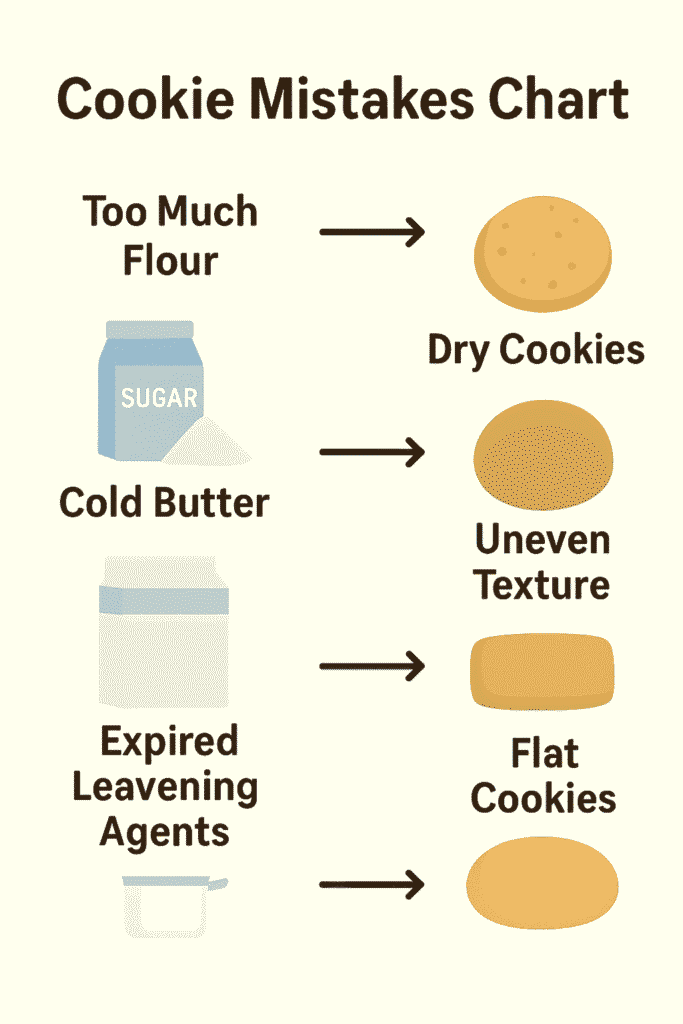
✨ Final Thoughts
Cookie texture is not random — it’s science. Every ingredient, from flour to sugar to fat, directly shapes whether your cookies turn out chewy, crispy, or cakey. By understanding how each component works (and avoiding common mistakes), you can take full control of your baking results.
👉 Think of this post as your cookie texture roadmap:
- Adjust flour and sugar for structure and spread.
- Choose the right fat for chewiness vs. crispiness.
- Handle eggs and leavening agents with care.
- Experiment with add-ins to create your signature cookie style.
Master these basics, and you’ll be able to troubleshoot texture issues like a pro and consistently bake cookies that match your personal preference. Now you know exactly how ingredients affect cookie texture, from flour and sugar to eggs and fats
👉 “For more insights into cookie texture science, check out this guide from King Arthur Baking.”

